The 1970s were a golden age of animation that defied all logic and reason, producing cartoon characters that would make modern viewers do a double-take. Animation studios seemed to operate under a collective fever dream, creating characters that were equal parts bizarre, wonderful, and utterly inexplicable. These animated personalities pushed the boundaries of creativity in ways that continue to baffle and fascinate viewers decades later.
1. Inch High, Private Eye: The Microscopic Detective
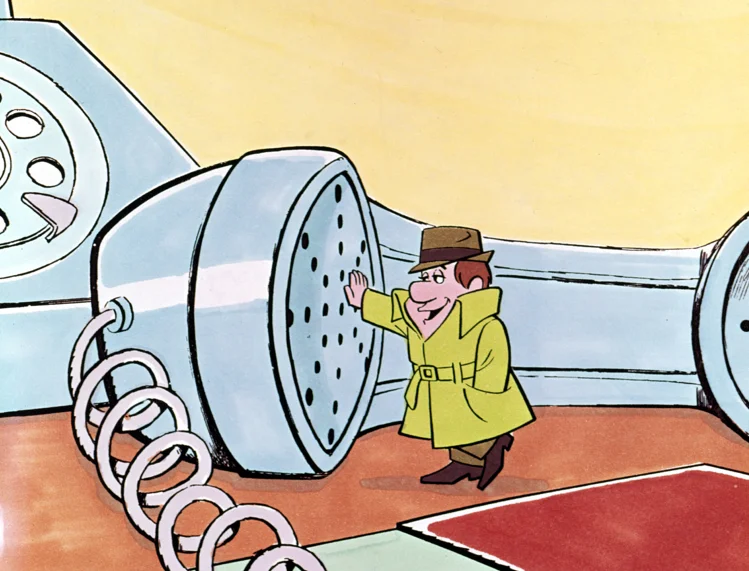
Standing at a mere inch tall, this private investigator was literally the smallest detective in cartoon history, solving crimes from a perspective that defied all physical logic. Inch High would navigate the world through a series of improbable modes of transportation, often riding on the shoulders of his much larger colleagues. The very concept of a detective who could barely see over a coffee cup created a surreal premise that somehow became a legitimate animated series. MeTV pays special tribute to this series as one of over a dozen from the past we used to love.
The character’s design was a masterclass in absurdity, with a tiny body that somehow maintained perfect detective proportions. His ability to solve crimes while being so monumentally disadvantaged by his size created a narrative that was equal parts ridiculous and compelling. Inch High represented a bizarre wish fulfillment fantasy where being small was actually an advantage in the detective world.
2. Grape Ape: The Purple Primate of Peculiarity
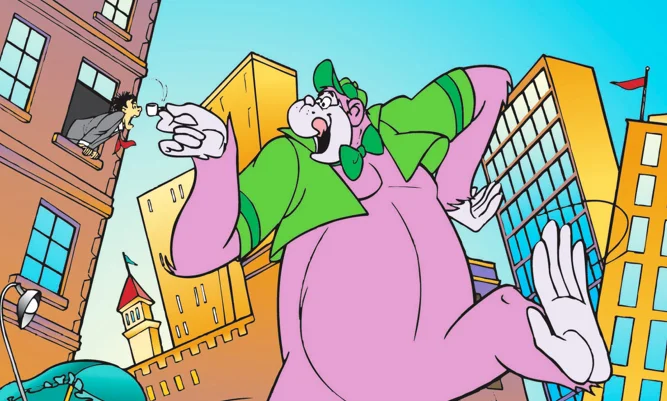
A massive purple gorilla who spoke with an inexplicable catchphrase and seemed to exist in a world that made absolutely no sense, Grape Ape was a walking (or rather, lumbering) testament to ’70s cartoon absurdity. His primary character trait seemed to be simply being purple and enormous, with a personality that was as undefined as his purpose. The character moved through various scenarios with a kind of zen-like indifference that suggested he was barely aware of his own existence. As outlined on TVGuide, it did boast a solid cast.
The color purple was apparently his entire personality, with animators seemingly pulling character traits out of thin air. Grape Ape would appear in various scenarios that rarely made logical sense, often accompanying other Hanna-Barbera characters with no clear narrative purpose. He was less a character and more a purple-colored non sequitur brought to animated life.
3. The Banana Splits: Nightmare-Fuel Musical Animals
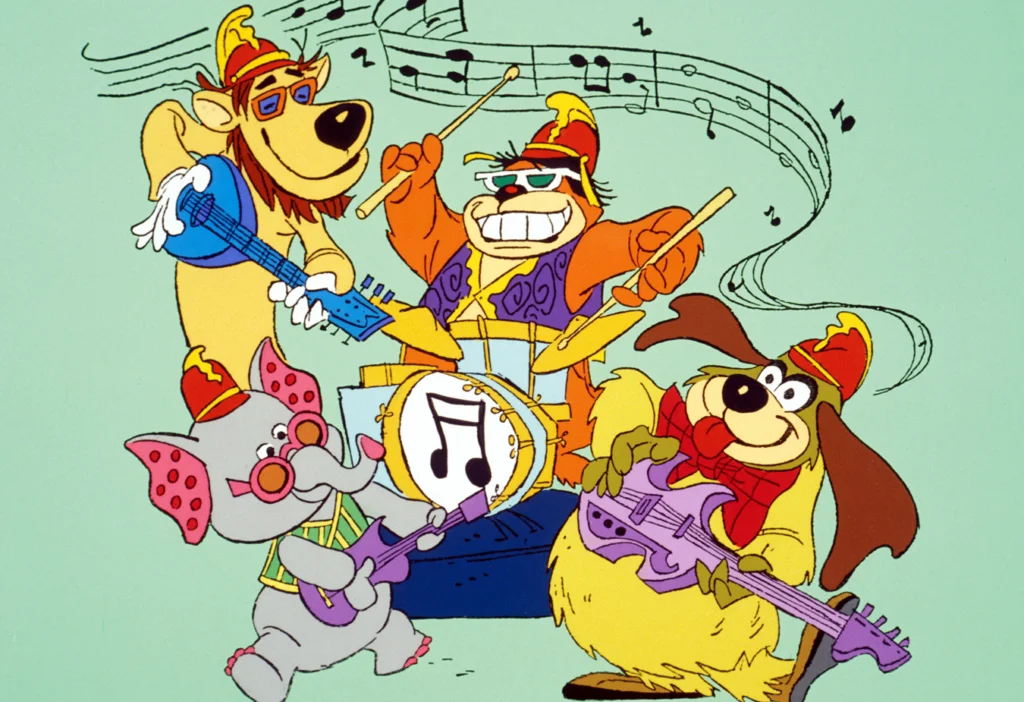
A musical group composed of four human-sized anthropomorphic animals in psychedelic costumes, the Banana Splits existed in a realm between children’s entertainment and fever dream. Dressed in outlandish outfits that combined animal characteristics with mod ’70s fashion, these characters defied all conventional logic about what could be considered child-friendly entertainment. Fleegle (a beagle), Bingo (a gorilla), Drooper (a lion), and Snorky (an elephant) created a musical group that looked like a fever dream. Nostalgia Center dives into the strengths behind this quirky cartoon.
Their variety show format mixed live-action comedy, musical performances, and animated segments in a way that would be considered completely incomprehensible by modern standards. The costumes were so elaborate and strange that they bordered on terrifying, with oversized heads and bodies that seemed to defy anatomical possibility. The Banana Splits were less a children’s entertainment group and more a bizarre social experiment in surrealism.
4. Hong Kong Phooey: The Incompetent Superhero Dog
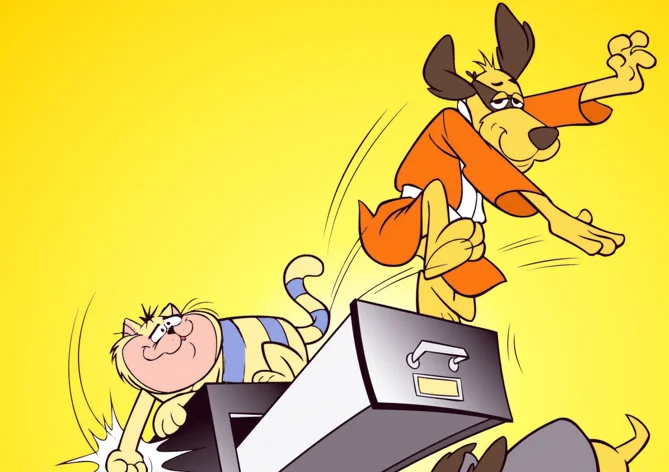
A bumbling dog who transformed into a martial arts superhero, Hong Kong Phooey represented a bizarre intersection of ’70s kung fu fascination and anthropomorphic animal comedy. His secret identity as a mild-mannered police station janitor who somehow became a crime-fighting hero created a narrative premise that defied all logic. The character’s transformation sequence and complete incompetence made him more of a comedic figure than an actual superhero.
His faithful cat, who actually solved most of the crimes, provided a meta-commentary on the character’s complete ineffectiveness. Hong Kong Phooey moved through his world with a kind of oblivious confidence that suggested he was unaware of his own incompetence. The character was less a serious superhero and more a walking joke about martial arts tropes.
5. Captain Caveman: The Prehistoric Superhero
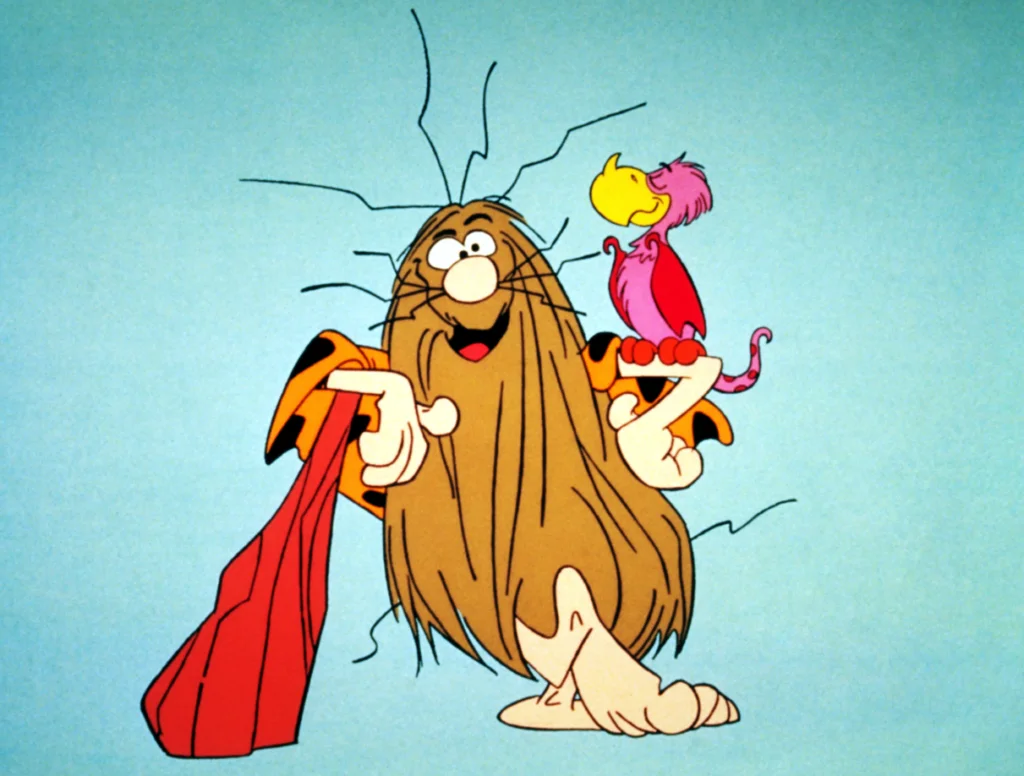
A tiny, hair-covered caveman with the ability to pull virtually anything out of his massive fur, Captain Caveman was less a coherent character and more a walking plot device. His primary method of problem-solving involved shouting his own name and pulling increasingly improbable objects from his fur, creating a problem-solving approach that would be considered completely absurd by any rational standard. The character existed in a world where physics and logic were mere suggestions.
His membership in the Teen Angels, a crime-solving group, made absolutely no sense from any logical perspective. Captain Caveman would solve problems through a combination of prehistoric strength and completely inexplicable magical fur-based abilities. The character was less a superhero and more a walking non sequitur that happened to occasionally solve crimes.
6. Jabberjaw: The Talking Shark Drummer
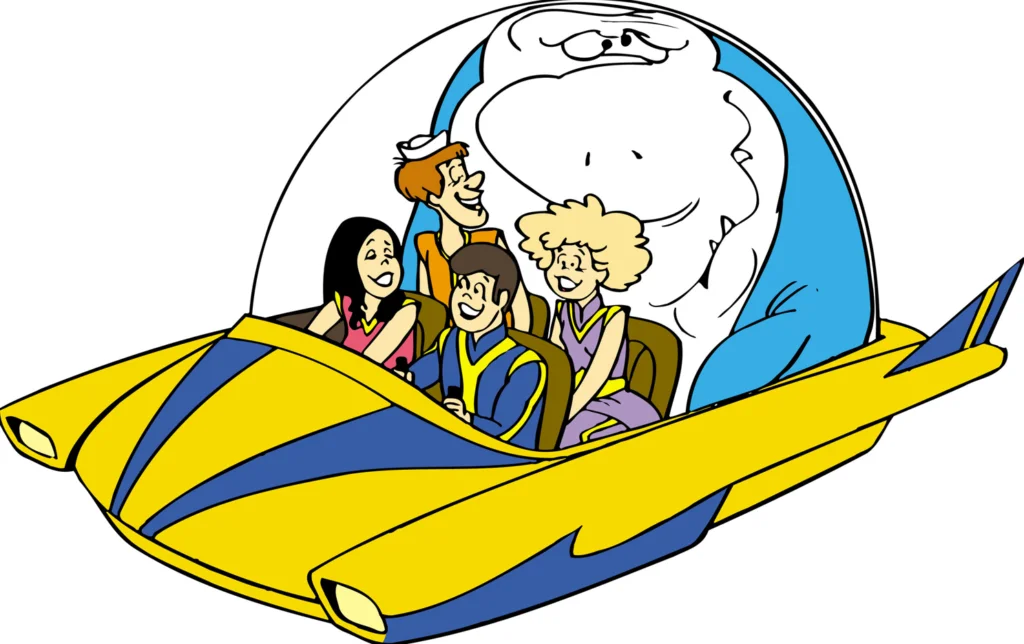
A talking great white shark who played drums in a rock band and complained about not getting respect, Jabberjaw existed in a world that completely defied marine biology or basic logic. His character seemed to be built entirely around the premise of “what if a shark had the personality of a neurotic New York comedian?” The character moved through underwater adventures with a level of social anxiety that seemed completely incompatible with being a predatory sea creature.
His rock band, the Neptunes, operated in an underwater world that suggested sharks could not only play instruments but also form musical groups. Jabberjaw’s primary character trait was his constant kvetching about not receiving proper respect, despite being a massive talking shark. The character was less a coherent animated personality and more a walking punchline.
7. Speed Buggy: The Sentient Dune Buggy
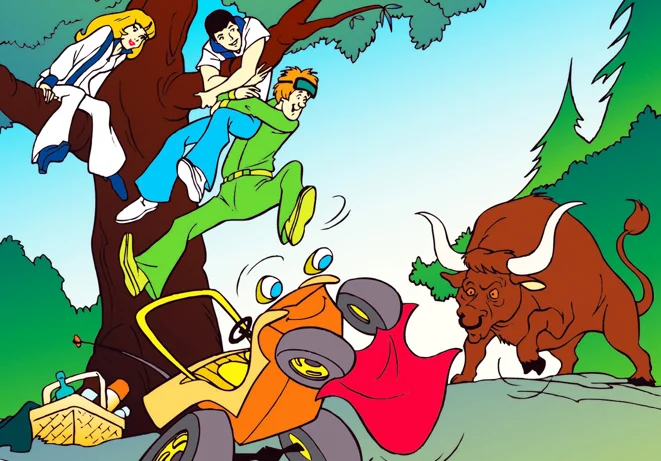
A talking dune buggy with a personality that combined teenage enthusiasm with complete mechanical irrationality, Speed Buggy pushed the boundaries of what could be considered a legitimate character. The vehicle could communicate, drive itself, and participate in adventures in a way that suggested it was more sentient being than automobile. Speed Buggy’s ability to express emotion and engage in complex problem-solving while simultaneously being a vehicle created a surreal narrative premise.
The character existed in a world where automotive sentience was apparently a completely normal occurrence. Speed Buggy would solve problems and participate in adventures with a level of agency that suggested it was essentially a living being trapped in a vehicle’s body. The character defied all logical understanding of transportation and consciousness.
8. The Robonic Stooges: Cyborg Slapstick Heroes

A cybernetic reimagining of the classic comedy trio, the Robonic Stooges took an already absurd comedy group and added science fiction elements that pushed the concept into complete nonsense. These mechanical versions of Larry, Moe, and Curly could transform parts of their bodies into various mechanical devices, creating a premise that was equal parts ridiculous and fascinating. The characters existed in a world where slapstick comedy met science fiction in the most improbable way possible.
Their ability to transform body parts into random mechanical devices suggested a complete disregard for both comedy and scientific logic. The Robonic Stooges would solve problems through a combination of mechanical transformation and classic Three Stooges-style physical comedy. The characters were less superheroes and more a bizarre thought experiment about comedic cybernetics.
9. Wheelie and the Chopper Bunch: Talking Vehicles with Attitude
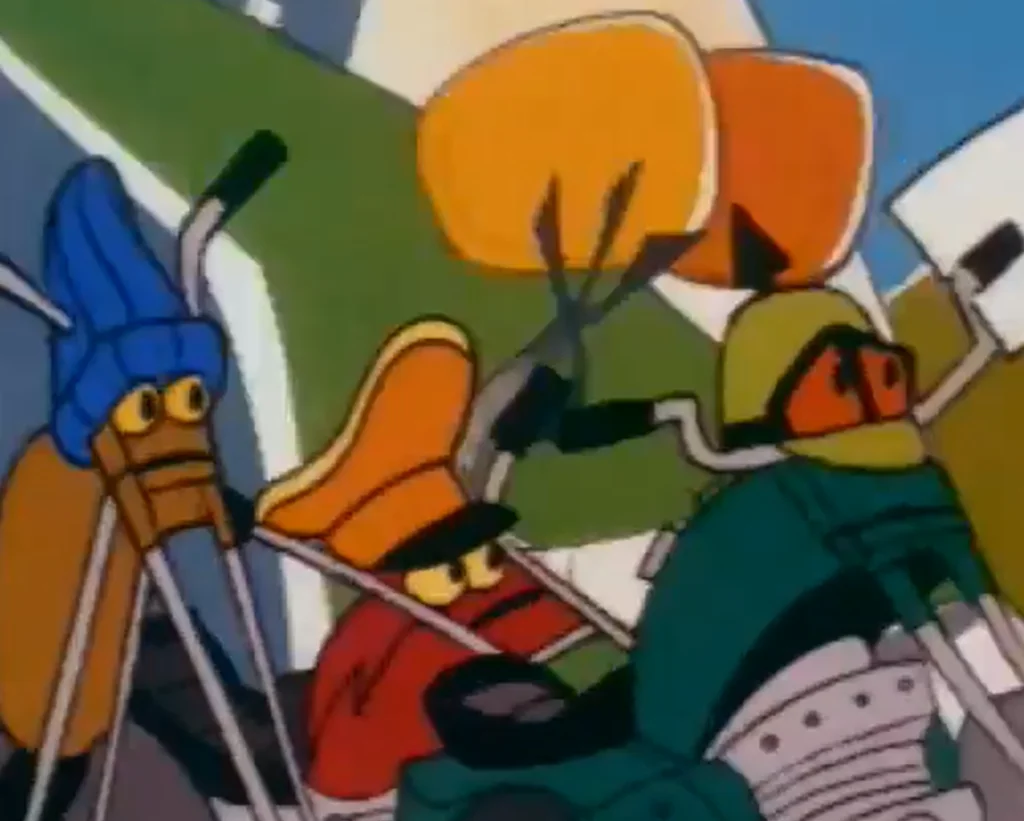
A cartoon about sentient vehicles with complex personalities, Wheelie and the Chopper Bunch existed in a world where automobiles had social hierarchies and emotional lives. The main character, Wheelie, was a sympathetic van who could communicate and have adventures, surrounded by a group of motorcycle characters with distinct personalities. The show suggested a world where vehicles were essentially people with wheels.
The characters would engage in adventures and social dynamics that would be complex for human characters, let alone automobiles. Wheelie and his friends operated in a world where vehicle sentience was apparently a completely normal occurrence. The show was less a coherent narrative and more a fever dream about transportation.
10. Klondike Kat: The Canadian Mountie Cat
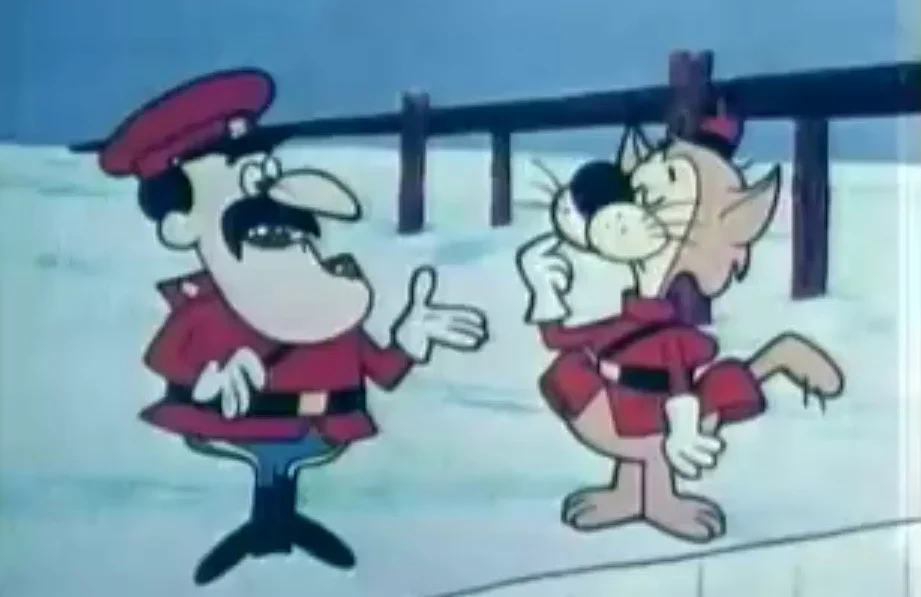
A cat who worked as a Canadian Mountie, dedicated to catching a mouse named Savoir Faire, Klondike Kat represented a bizarre take on law enforcement and animal dynamics. The character’s entire narrative purpose seemed to be catching one specific mouse, creating a premise that was equal parts specific and completely ridiculous. The show existed in a world where a cat’s entire professional identity was built around catching a single rodent.
Klondike Kat’s dedication to catching Savoir Faire bordered on obsessive, suggesting a level of professional commitment that seemed completely incompatible with being a cartoon animal. The character moved through adventures with a single-minded focus that defied all logical understanding of law enforcement or animal behavior. The show was less a coherent narrative and more a walking punchline about professional dedication.
11. Goober and the Ghost Chasers: Supernatural Teenage Investigators
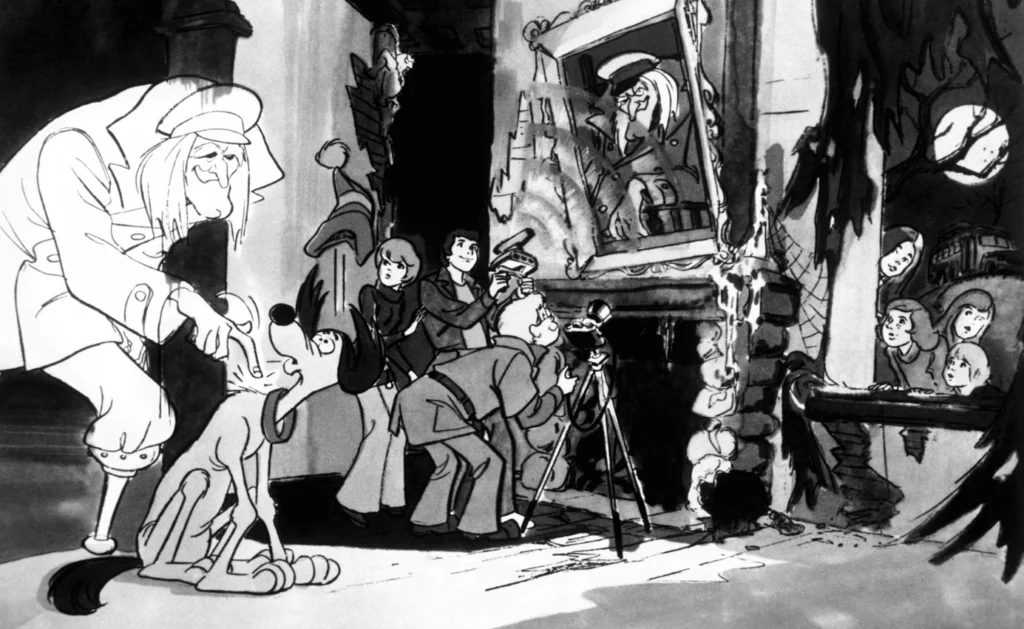
A group of teenage paranormal investigators accompanied by a shapeshifting dog, Goober and the Ghost Chasers existed in a world where supernatural investigation was apparently a normal teenage activity. The show combined elements of comedy, horror, and complete narrative nonsense in a way that could only exist in ’70s animation. The characters would investigate ghosts with a level of casual approach that suggested supernatural encounters were essentially a weekend hobby.
The show’s premise suggested a world where teenagers could casually interact with supernatural entities without any apparent adult supervision. Goober, the shapeshifting dog, could transform into various objects and creatures, creating a character that defied all logical understanding of canine biology. The show was less a coherent narrative and more a bizarre experiment in supernatural comedy.
12. Butch Cassidy and the Sundance Kids: Musical Espionage
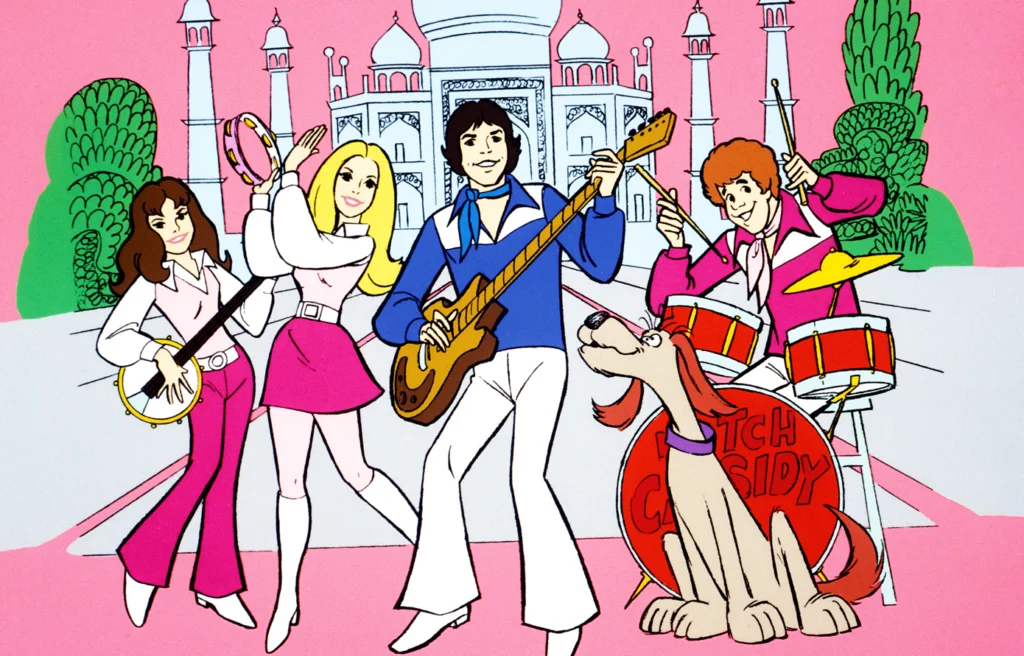
A pop band that doubled as an international espionage team, Butch Cassidy and the Sundance Kids represented the ultimate ’70s mashup of music and action. The show suggested a world where musical talent was essentially a cover for international spy operations, creating a premise that was equal parts ridiculous and fascinating. The characters would solve international mysteries between musical performances, suggesting a complete disregard for both musical and espionage logistics.
Their ability to seamlessly transition between musical performances and complex international missions suggested a world where entertainment and global security were essentially the same thing. The show existed in a narrative space that combined teen drama, musical performance, and international espionage in ways that defied all logical understanding. The characters were less coherent protagonists and more a walking ’70s cultural fever dream.
As we look back on these bizarre cartoon characters, we’re reminded that ’70s animation existed in a realm of pure, unfiltered creativity. These characters represent a time when storytelling knew no boundaries, when animators could pitch the most absurd premises and somehow get them produced. So here’s to the cartoon characters that made absolutely no sense – may they continue to baffle and delight us for generations to come.


